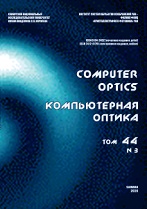|
This article is cited in 1 scientific paper (total in 1 paper)
IMAGE PROCESSING, PATTERN RECOGNITION
Super-resolution microscopy based on interpolation and wide spectrum de-noising
T. Cheng, Ch. Tao
Guangxi University of Science and Technology, 545006, P.R. China, Liuzhou, Chengzhong District, Avenue Donghuan, 268
Abstract:
In the conventional single-molecule localizations and super-resolution microscopy, the pixel size of a raw image is approximately equal to the standard deviation of the point spread function. Such a raw image is referred to herein as a conventional raw image, based on which better single molecule localization effect and efficiency can be achieved. It is found that both interpolation and de-noising can effectively improve the Signal to Noise Ratio of the conventional raw image. The conventional raw image, the de-noised, the interpolated and the de-noised interpolated are compared and analyzed and compressed sensing is used for super-resolution reconstruction. The simulation results show that both the highest Signal to Noise Ratio and the best super-resolution reconstruction can be obtained by de-noising the interpolated conventional raw image. This method also renders the best super-resolution reconstruction and minimum gradient in the real experiment. De-noising the interpolated conventional raw image is an effective method to improve the super-resolution microscopy.
Keywords:
super-resolution microscopy; interpolation; de-noising; point spread function; compressed sensing
Received: 06.01.2023
Accepted: 20.02.2023
Citation:
T. Cheng, Ch. Tao, “Super-resolution microscopy based on interpolation and wide spectrum de-noising”, Computer Optics, 47:4 (2023), 614–619
Linking options:
https://www.mathnet.ru/eng/co1162 https://www.mathnet.ru/eng/co/v47/i4/p614
|

| Statistics & downloads: |
| Abstract page: | 8 | | Full-text PDF : | 2 | | References: | 3 |
|




 Contact us:
Contact us: Terms of Use
Terms of Use
 Registration to the website
Registration to the website Logotypes
Logotypes








 Citation in format
Citation in format 
